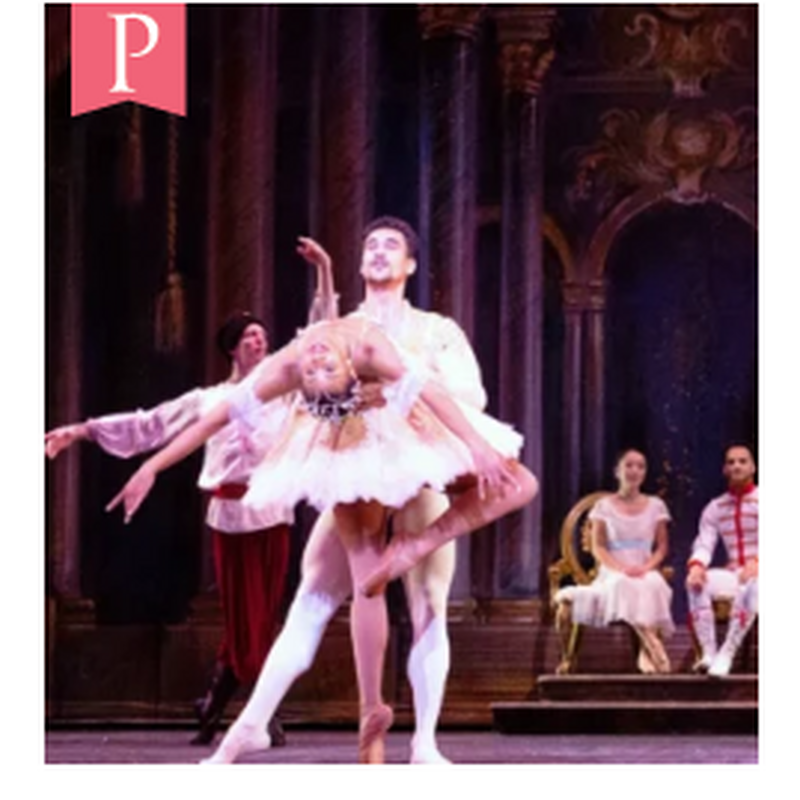Pointe Magazine Profile on Ballet Memphis
by Steve Sucato
read from the pdf here or text pasted below:
Ballet Memphis Artistic Director Steven McMahon Looks for Dancers With Individuality and a Collaborative Spirit
When Dorothy Gunther Pugh founded Ballet Memphis in 1986 (then known as Memphis Concert Ballet), it was with two dancers and a budget of $75,000. A lot has changed since then. The company now employs 18 dancers with an annual operating budget of $4.2 million. And in 2017, it opened a new, *$22 million headquarters.
After Pugh’s retirement in **2019, associate artistic director Steven McMahon took over as only the second artistic director in Ballet Memphis’ now 36-year history. A native of Glasgow, Scotland, McMahon was a dancer with Ballet Memphis from 2004–16 and has been a leading choreographer for the company. So far he’s created over 30 ballets, including full-length productions of Peter Pan, Dracula, Wizard of Oz, and Romeo and Juliet.
“When I came to America to attend The Ailey School, I couldn’t have pointed to Memphis on a map,” says McMahon. “But when I ended up auditioning for the company, it very quickly felt that it was the place I needed to be.”
Fast-forward 15 years and McMahon, having inherited an organization he had seen evolve for his entire professional career, didn’t see much need for change under his leadership.
“I am not a radical person,” says McMahon. “I believed in Dorothy’s vision. We make a lot of thematic work here, and I was always really interested in how Dorothy used ballet and contemporary dance to ask larger questions about the world. I wanted to keep that focus and keep making new work.”
He also wanted to keep the company legacy of choreographing dances to music and literature from the Southern region. Past works have included Trey McIntyre’s Memphis Suite and Roy Orbison–themed In Dreams, and Julia Adam’s The Awakening, based on Kate Chopin’s novel of the same name.
“This city has a lot of pride in its cultural contributions to the world, and I want to honor that but also move beyond it to inspire young choreographers.”
McMahon’s own vision for the company’s repertoire has been a mix of original and existing works that are new to Memphis, including those from the ballet canon (including George Balanchine and Gerald Arpino) and contemporary choreographers Matthew Neenan, Gabrielle Lamb, and Joshua L. Peugh. “I want the repertory to straddle the line between classical and contemporary,” says McMahon.
In commissioning works from new choreographers, McMahon says he takes his cue from Pugh’s bold approach of taking chances on new talent. He’s given recent opportunities to burgeoning choreographers Marcus Willis, Alia Kache, Durante Verzola, and Ballet Memphis company dancer Emilia Sandoval.
“It’s a big risk to bring in somebody you have never worked with and throw resources at them and hope that it works,” says McMahon. “But that’s what this company has done; they did it with me. I look for new dancemakers that have a clear point of view and if I have given them a theme, they really give that thought.”
McMahon, who still choreographs for the company, has a brand-new Nutcracker production in the works to premiere this December. He is also continuing to give Ballet Memphis’ company members opportunities to create, as it has for nearly 25 years, with the annual dancer-choreographed program, INTERIORWORKS. (Proceeds benefit the company members’ Artists’ Resource Fund.)
In hiring dancers, McMahon looks for individuality.
“Our company is so different physically, in the dancers’ training and where they come from,” he says. “That is by design. I am interested in the person that I see. I like dancers who have curiosity and a hunger to move outside of their comfort zone. We have a rule around here that every dancer has to perform in at least one dance work per program.”
“In a lot of ways, the company is the same as when I joined at age 17 in 2001,” says dancer Virginia Pilgrim Ramey, who also serves as co-director of the Ballet Memphis School and Youth Ballet Memphis. “We do classical and contemporary works, and you have to be very versatile.” Ramey, who started training at the school at age 5, says McMahon cultivates a collaborative studio atmosphere that fosters opportunity and individual growth. “We are a little smaller group now from when I joined, but the dancers are equally talented and ready to perform principal roles at moment’s notice,” says Ramey.
Ballet Memphis became a union company in January, with its dancers joining The American Guild of Musical Artists (AGMA). The company has no trainees, apprentices, or second company at present, but McMahon says the organization is looking at how it can offer more opportunities to young dancers. He also wants the company to tour, as it has in the past. “We have a very specific identity when it comes to works set to Memphis and popular music that I think is appealing to audiences,” he says.
On the important topic of diversity, equity, inclusion, and accessibility, McMahon says that has always been a part of the organization’s thinking. “Memphis is a majority minority city. DEI has always been how we have thought about work. Sometimes we have gotten things wrong, but we have always been consistent in making space for it to be better. For me, I want as many voices as possible to make work at Ballet Memphis.”
Ballet Memphis at a Glance
Number of dancers: 18
Contract length: 38 weeks
Starting salary: $650/week
Performances per year: Up to 28
Website: balletmemphis.org
Auditions: The company holds three open auditions in the spring: one at Ballet Memphis and the others in strategic cities like New York, Philadelphia, or Houston. McMahon does not hire dancers directly from video submissions, but if interested he will invite them to Memphis or to one of the other open auditions. He looks for a solid technical base, musicality, and clarity of movement, as well as natural flow with transition steps and a collaborative spirit. His advice for auditioning dancers? “Show the love of dance that you have. And if you can, come to the city you might be living in. A big part of your success as a dancer is feeling you can make a life in the place you are working.”
*27
**2020




